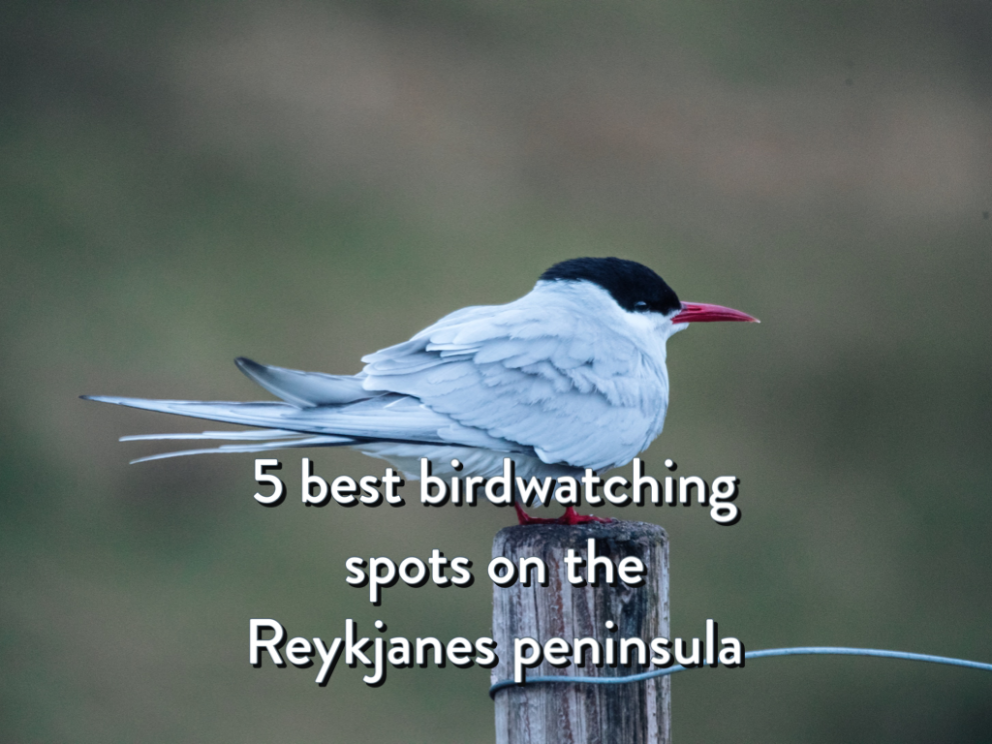5 Best birdwatching spots on the Reykjanes Peninsula
Krýsuvíkurberg
To reach this impressive bird cliff – which incidentally is the largest on the Reykjanes peninsula – you’ll either need to point your 4x4 down a rough gravel road or instead, if the weather’s fine, take a hike instead. However you reach it, it’s impressive and well worth the slightly challenging journey when you reach this rock face teeming with thousands of birds. Depending on the season, if you study the cliff and shoreline, you might see kittiwakes, razorbills, guillemots, fulmars, shags, gulls and puffins. In addition, snow buntings and purple sandpipers like to nest on the cliff top, so don’t be in too much of a hurry to leave if it’s breeding season. If you’re keen to visit another bird cliff destination, try Hafnaberg further west, where you’ll find numerous fulmars, kittiwakes, guillemots and razorbills.
Ósar and Hafnir
You might think that winter’s a poor time to be in Iceland for birdwatching but that’s not necessarily the case. Sure, the puffins are long gone, but if you head for Ósar Bay near the village of Hafnir, you will see plenty of waders pottering around on the sandy mudflat when it’s exposed at low tide. Ducks are found here in sizeable numbers in the autumn and winter and some of them are particularly special. For instance Iceland is the only European breeding ground of Harlequin ducks. Other species to look out for include long-tailed ducks, mallards, Greater Scaup, Red-breasted Merganser and of course Common Eiders. Great and Arctic skuas next in the lava and short grass close to Hafnir.
Garður
The north of the peninsula is where to come if you’re keen to sight snow buntings, rock ptarmigan, gyrfalcons and merlins. Migrating birds crossing the Atlantic stop and rest at the three ponds close by – Útskálasíki, Miðhúsasíki, and Gerðasíki. Keep an eye out for gull-billed terns, American bitterns and purple gallinule. During the warmer months, you’re quite likely to catch a glimpse of Manx shearwater, European storm petrels skuas and Atlantic puffins. Take a stroll along the path to Garðskagi where the lighthouses are, you can combine on-shore whale watching with ornithology. Scan the shoreline for Lapland longspurs, for instance.
Valahnúkur
Arctic terns are notorious for their anti-social behaviour, particularly when caring for their young. If you’re brave enough to want to get a closer look at these captivating avian thugs (we suggest wearing a hat to protect your head!) then you’ll be keen to know that Valahnúkur is home to the only colony of Arctic terns in a geothermal area. A few miles is Eldey Island, which houses one of the largest northern gannet colonies on the planet. Once, the flightless great auk was also found there; sadly, the last two birds were killed in 1844 and there’s a bronze statue looking out towards the island to commemorate the loss.
Sandgerði
Make your way to Sandgerði and when you’re close to the fish factories you can reap the benefits of the leftover pieces of fish that are washed out of the pipes to the delight of savvy local birds, such as fulmars. It’s also heaving with gulls – in Sandgerði you’re likely to rack up sightings of black-backed, herring and black-headed gulls, and might also spot ring-billed, American herring, Ross’s, ivory and Sabine’s gulls. In the area’s ponds, you might hit the jackpot with a sighting of a green sandpiper, cackling goose, or a lesser yellowlegs and you’re sure to see plenty of ducks. The nearby harbour, mudflats and rocky shores also attract birds including gyrfalcons, merlins and curlews, making the variety in this area nothing short of remarkable.

